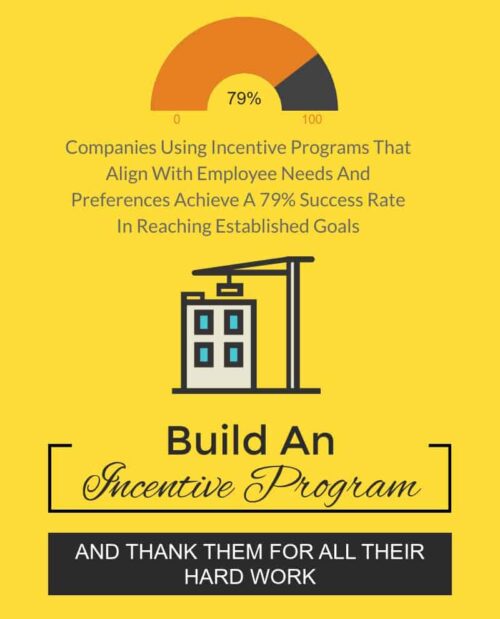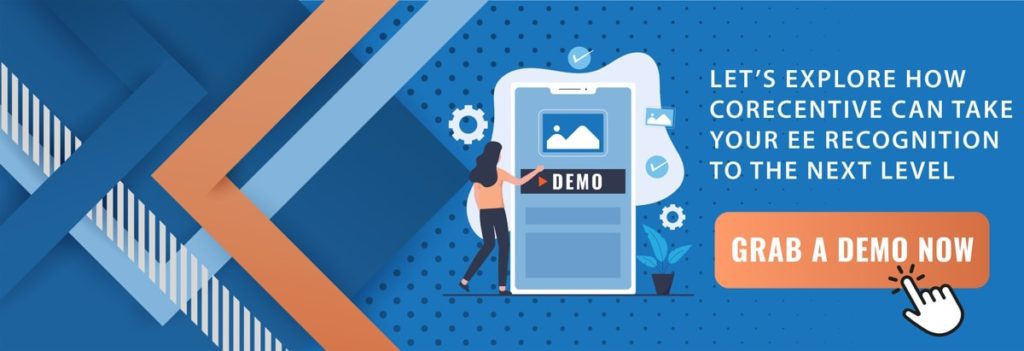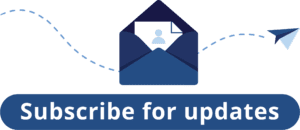Think about this statistic: Companies using incentive programs that align with employee needs and preferences achieve a 79% success rate in reaching established goals.
Clearly, you require an employee incentive program that works. It’s how you motivate employees to do their best work for the business.
But how do you actually reward employees? You don’t want to offer benefits they don’t need. And you certainly don’t want.
First, understand no one-size-fits-all approach will do the trick. Your employees have different goals, lives, and interests. Julie Bevacqua, CRO of Rise People, stresses this best:
“In order to build a rewarding employee experience, you need to understand what matters most to your people.”
If you start with this concept as a focal point, your employee incentive program will have a good foundation. After all, you’re in the people business. Get to know your people, and you’ll understand how to ensure they’re happy in the workplace.
And that’s crucial. As lots of research shows, happier workers are more productive workers. It pays to invest in employee well-being.
Here’s how you can build an employee incentive program that takes care of your team members and enables your company to thrive:
Recognition Is Key for Employee Incentive Programs
The stats on employee engagement should alarm:
- 69% of US workers aren’t engaged at work (Gallup).
- 79% of employers feel they have an engagement problem (Deloitte University).
Companies need to address the engagement issue. Because engaged employees move the bottom line in a big way. Companies with engaged workers outperform those without engaged workers by 202%, a Gallup report found.
That’s incredible.
But how can you make workers more engaged? The best solution is quite simple: Recognize your employees for what they do!
Consider this: 78% of employees state they work harder when recognized, according to a GloboForce Survey. Furthermore, 85% feel more satisfied at their jobs, and 78% say their productivity rises when leadership recognizes their work.
Digest that for a moment.
Without a doubt, any incentive program should revolve around employee recognition and getting workers engaged. There’s simply too much to lose if you don’t properly recognize the efforts of your team members.
Your employee incentive program must acknowledge quality work through worthwhile employee rewards. Here are some employee recognition strategies to keep in mind:
- Employee recognition is best given in the moment.
- If you don’t have a formal reward, like a gift, show your appreciation with your words. Telling your workers, they did a good job and that you’re thankful for their hard work can go a long way, especially if they just completed a laborious task.
- Employee recognition is memorable.
- A team member should remember why they got a certain reward. The most memorable employee rewards include personalized gifts and experiences. For instance, you could give an employee that enjoys rock climbing a prepaid rock climbing adventure for doing a good job on an important project.
- Employee recognition empowers.
- McKinsey research finds the majority of workers value greater attention from leaders (63%) and the opportunity to lead projects (62%). So, make employee recognition about empowerment. Give those that perform well more responsibility and opportunities.
- Employee recognition should include performance feedback.
- Your employees don’t want to be coddled. They want to improve! Research shows continuous performance feedback improves manager-worker relationships. Managers and senior leadership should prioritize regularly providing feedback.
In short, employee recognition should fuel the success of your employee incentive program. Excite, engage and empower your team on a daily basis.
Prioritize Learning and Development with Your Employee Incentive Program
It’s practical to want an employee incentive program to propel growth at your company. A great way to do that is through learning and development programs that expand your staff’s skills and knowledge. You’ll also get their creative juices flowing, which could inspire innovation that opens up new avenues for company growth.
The good news is that your employees desire learning and development opportunities as well. In fact, it’s one of the most valuable intrinsic incentives, along with employee recognition. 87% of millennials rate professional growth and development opportunities as important to them, according to a Gallup survey. 69% of non-millennial workers value learning and growth too.
Unfortunately, many workers don’t truly get professional growth at their jobs. Only 39% of millennials believe they’ve learned something new at their job in the past month. Among those, only one-third strongly agreed it was worth the time.
These missed opportunities for learning and growth definitely affect businesses. As an article in Forbes on the benefits of upskilling notes, the right learning and development programs can boost employee retention, assist with succession strategies, and increase worker productivity. Without such a program, you could lose workers, find it tough to fill specialized roles and get stagnant performance.
Missed opportunities for professional development also affect workers. It’s not that your staff feels entitled to skills training. It’s that they want to improve, be more useful, and find more meaning in their work. They have their own career goals as well, which necessitates continuous learning and development.
As research proves, it makes sense to wrap learning and development in with your employee incentive program. But you can’t just sign team members up for any professional training course. They don’t have time to learn things not applicable to their job or aspirations.
Instead, customize each learning and development program. As a human resource management blog post published by the State University of New York attests, professional development should be “geared toward improving an area ‘in need of improvement’ from a previous evaluation or related to an employee’s new responsibilities or future career goals.”
When building a learning and development program for a specific employee, identify their long- and short-term wants and needs. Then, create an organized training program with clear milestones and goals. Add in activities and training sessions that work towards those goals.
Examples of worthwhile learning and development activities could include:
- continuing education: enrollment in formal degree programs, pursuing certifications and accreditation, etc
- involvement with professional organizations: networking at conferences and workshops, coordinating events at organizations, etc
- job-focused training: learning about new developments in the field, honing existing skills, adding tech skills, etc
- new challenges: taking on short- and long-term projects that will test and improve skills and knowledge
For example, if you run a software company, you can show your appreciation for your developers by helping them get active in the local programming community. You could also pay for them to attend DevDay, PolyConf, or another important developer conference. These events can enable your team to exchange valuable ideas, become more knowledgeable about a new framework, network with other developers, and get inspired. They’ll even have fun and return to work happier. This could all equate to a tremendous value-add for your company.
As you can see, professional development can fit in well with an employee incentive program as long as the content and activities are engaging and relevant to current and future work. Avoid those long, boring lectures!
Finally, keep clear goals and track progress along with your employees. This way, you and your team can both see the benefits of the learning and development initiative. An agile, unified technology platform for your employee incentive program can help here. This will keep you flexible as things change. And it will ensure you achieve real progress and measurable success.
Make Employee Incentives Experiential
Think of why airlines have a miles system. It’s because miles equate to travel—and that means the chance to experience new, exciting places. Airline rewards programs encourage participation, boost loyalty, and ultimately increase customer satisfaction. That’s because they effectively incentive customers with experiences (flying and traveling).
You can learn something here for your employee incentive program. When creating extrinsic incentives for your team (i.e., tangible rewards), go beyond monetary incentives to more substantial experiential rewards.
As Professor Khim Kelly, a performance evaluation expert, says, fun, enjoyable experiences stimulate a part of the brain that cash doesn’t.” Experiences are more memorable, meaningful, and enjoyable.
Dr. Thomas Gilovich, a psychology professor at Cornell University, expands on the idea that experiences bring us more happiness. As he states, “We buy things to make us happy, and we succeed. But only for a while…you’ll get more happiness spending money on experiences like going to art exhibits, doing outdoor activities, learning a new skill, or traveling.”
You can apply this idea to your employee incentive program. When coming up with rewards and gifts, offer real experiences that your employees want, much like brands do for their customers.
What’s also great is that you’ll see the ROI from such an incentive program for your employees. Gifting them travel to a bucket list destination, a gift card to their favorite restaurant, or a ticket to see their team play will enhance personal happiness and well-being. As mentioned earlier, happy and healthy workers are more productive.
Additionally, experiences are a flexible incentive that’s easy to manage financially. For instance, you can offer big, more expensive gifts, like travel to a beach destination, when your sales team reaches a revenue goal. Throughout the year, you can offer small, less expensive gifts, such as a lunch at a restaurant, to keep them motivated.
Obviously, for your employee incentive program to have success with experiences, you need to survey your staff to see what they like. You may find that you should provide a variety of experiences and gifts, such as:
- spa days
- yoga classes
- brewery tours
- music festival tickets
- individualized vacations
When providing experiential rewards, don’t just offer rewards for achieving end goals. Offer continuous rewards for progress and hard work throughout a project. And make sure everyone who puts in effort gets recognized. It creates unhealthy work habits and bad competition if you only offer rewards to those who reach a certain goal (remember the Wells Fargo sales goal scandal?
Here’s a quick list of do’s and don’ts for your experiential rewards:
- Don’t allow unhealthy competition; Do promote teamwork
- Don’t reward luck or popularity; Do reward hard work and individual progress
- Don’t implement ill-defined, unattainable goals; Do make goals measurable, clear, and reasonable
- Don’t hide why you’re offering incentives; Be transparent about the program and why you’re offering rewards
Customize Your Employee Incentive Program
Most offices are diverse places. Different team members have different needs. Cater to that with your employee incentive program.
As the Deloitte Global Human Capital Trends survey found, employees seek “more personalized, agile, and holistic employee rewards.” This is a key trend in talent management, and employee incentive programs must possess these characteristics.
If you truly take these human resources trends into account, you should end up with a completely customizable employee incentive program. That makes having a nimble technology platform to manage employee incentives all the more vital.
To make a more personalized employee incentive program, align rewards with personal preferences and needs. First, establish a personal relationship with each worker so you can get to know them better and understand their intrinsic and extrinsic motivations. Then, deliver the benefits that will benefit them.
For instance, a working mom may prefer a day off to go on a school field trip with her child, while a new employee may appreciate the chance to attend a networking event in your industry.
To make a more agile employee incentive program, allow for choice. Team members should have a wide variety of options, and HR teams should work with them in order to best meet their needs.
For example, you could give a new hire a choice between higher pay or more vacation. Or, when offering benefits, they could select benefits à la carte in order to accommodate their lifestyle better (i.e., they go for tuition reimbursement if they have student loans or childcare benefits if they have young children).
To make a more holistic employee incentive program, align rewards to the bigger picture. Yes, it’s about ensuring workers are taken care of. But everything should revolve around greater organizational goals. Implement a measurable way to answer this question:
- How does a certain employee incentive benefit the organization?
- Good example: The benefit of extra vacation time boosts Employee A’s satisfaction with her job. In the first three years of enjoying extra vacation time, her sales numbers at the company have improved by more than 10% each year.
You’ll reap the rewards if you can more effectively align rewards with organizational goals. As the same Deloitte survey found, companies that connect employee rewards and organization goals well are most likely to anticipate double-digit growth.
Promote Health and Well-Being with Your Employee Incentive Program
“Good health is good business,” Paul Drechsler, a businessman and executive, says.
The research back up the statement. The Global Wellness Institute estimates chronic disease, work-related illness and injury, employee disengagement, and work-related mental health issues cost the global economy 10-15% of its economic output.
Just think: Ignoring your employees’ physical, mental, and emotional health could decrease your bottom line by 10-15%. That should catch your attention.
The importance of employee health and well-being can’t be understated. Not only is it good business practice, but you also have an ethical commitment to take care of those who work for you.
This requires that you be adaptive with any employee incentive program because things come up at a moment’s notice.
When a web developer at Olark, a live chat software, emailed her boss in 2017 asking for a few mental health days, she got an amazing response. Her boss let her have time off, and also thanked her for cutting through the stigma and focusing on bringing her whole self to work. The story went viral, as workers around the country and the world praised the boss’ commitment to mental health and well-being.
Employees clearly value their happiness and health, which is why a 2018 Global Talent Trends survey found more than 50% of workers want employers that care about their well-being.
Here’s how you can improve employee well-being through an incentive program.
- Foster social connections through gatherings, parties, non-work collaborations, etc
- Show empathy by offering time off work when employees need it, listening to their concerns, going out of your way to help, etc.
- Offer a suite of wellness benefits, such as gym membership, HSA contributions, wellness challenges, and more.
- Provide free on-site health screenings so employees can actively monitor their health.
- Encourage workers to talk with you about anything, from work issues to upcoming needs in their personal life.
A positive work culture relies on leadership caring about their team members. For any employee incentive program to work, health and wellness should be at the core.
Continuously Improving Your Employee Incentive Program
Nothing is perfect at first. You have to leave room for improvement. That means getting feedback for your customer: Your employees!
When you consider that 75% of employees believe their companies should change performance management practices, you should probably ask them for suggestions because your employees know best what they want.
Based on employee feedback, as well as performance metrics, figure out ways to improve your employee incentive program. Don’t hesitate to experiment and test new tools, approaches, and processes.
To make sure your employee incentive program works effectively, utilize a platform designed for managing and tracking such programs. At CoreCentive, we offer flexible employee recognition and incentive solutions that can deliver maximum value to your organization.
![]()


